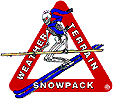Online Level 1 Avalanche Course
Module 5 Description - Avalanche Snowpack 1
Select Feedback
- The average student rating for this module, out of 10, is: 8.6
- The average student rating for this module in relation to others, out of 10, is: 8.1
- The percentage of students who felt all objectives were met is: 100%
- Select Student Comments:
- The objectives were met and retained more effectively than in the traditional 2 day field course.
- The differences between Maritime and Continental Snowpacks were covered very well.
- Thought having the videos was brilliant. Great way to illustrate points.
- The whole concept of visco-elasticity became so clear.
- Another well put together module.
- The photos/drawings were definitely helpful!
- The real world examples used (rather than made up examples) were good.
- Pictures and descriptions from various mountain regions are interesting.
- The main point was emphasized well.
- Interesting information that was presented in a way to keep you engaged.
Overview
This is Module 5 of the Level 1 Avalanche Class developed and supported by AlpenPro and offered here in the Avalanche Institute. This is the first of two modules on the mountain snowpack in the Level 1 curriculum.
The only prerequisite for this module is Module 1 - Preliminary (or Background) Material. It is a prerequisite for the first Level 1 field day, the Snowpack 2 module, and some advanced modules beyond Level 1.
The module covers the basic nature and features of the mountain (inclined) snowpack, introduces some of the properties of snow, and describes basic non-snowpit observations to be made. The emphasis is on introductory and applied topics with a little background theory to provide insight and understanding and to build a basis for further studies.
Objectives
- Describe how different layers form in a mountain snowpack
- Characterize maritime vs. continental “snow climates”
- Differentiate between new snow weaknesses and persistent weaknesses
- Explain what surface hoar is and the conditions under which it forms
- Explain how snow is visco-elastic and when it is more viscous or more elastic
- Define creep and glide and explain the difference
- Explain why convexities are often trigger points for slab avalanches
- List snow observations that can be made without a snowpit
- List and describe several “on the go” structure and stability checks
- List some of the reasons for spatial variation on the snow surface
Topics
This module covers three general topics:
- Introduction to the Mountain Snowpack
- Properties and Behaviors of Snow
- Basic Observations
Each of these is broken down further into sub-topics within the course, the Outline on this page shows more detail.
Outline
Welcome, Instructions
Introduction
The Mountain Snowpack
- Layering
- Climate and Snowpack
- Surface Hoar
Properties and Behaviors of Snow
- Gravity on the Snowpack
- Glide
- Viscous vs Elastic Behavior
- Creep
Basic Observations
- General "Big Picture" Observations
- Before the Trailhead
- Observed Avalanches
- Active Tests
- Below the Surface
- Context and Limitations
Wrap-Up
- Review
Human and technical Resources
This module has complete access to human resources and technical support. There are numerous ways to contact an instructor and to interact with other students. The module has its own forum for questions and discussion, there is a dropbox for sending documents (including messages) to other students in the module and/or an instructor, there is a messaging system accessed from the top of the web interface, and there is always email.
Assessment
There are quizzes incorporated into this course which allow students to check their understanding of the material. Quizzes may be taken as many times as desired, either to obtain a passing score or just to attempt to ultimately get a perfect score.
Quizzes are taken and scored online.
Successful completion of this module requires passing all assessments.
Course material
Most of the materials included in this module are from a workbook developed and used by AlpenPro. A few items are from the Avalanche Center website. Links are provided to external resources where appropriate.

 Avalanche Institute Home
Avalanche Institute Home